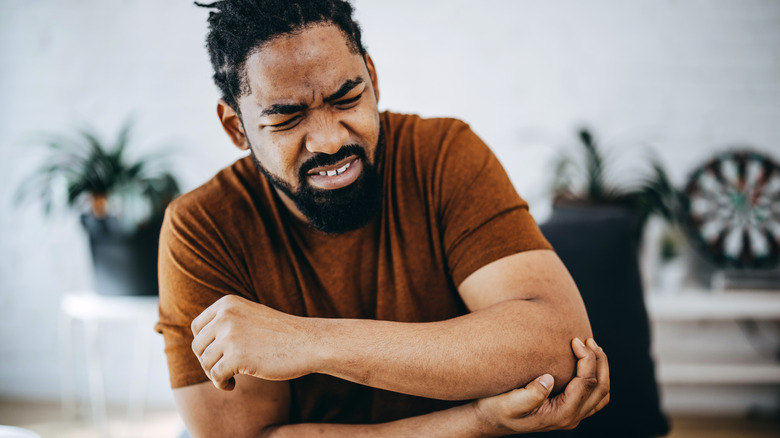The Only Spot On Your Body That Can Feel No Pain
The human body is an intriguing thing. Our internal organs — heart, lungs, kidneys, liver, brain, etc. — are covered by muscle tissues, fat, and skin and we go about getting various jobs done throughout the day using our hands and feet. We walk from home to work, we pick up onions while in the kitchen, we put ourselves to sleep, and we sit down to watch some Netflix when the day draws to a close. While doing any number of these things, we also expose ourselves to the possibility of pain, either from a stubbed toe or a bad sleeping position that leads to back pain.
Pain is your body's way of letting you know something is up. It's a call that alerts us to protect ourselves, so to speak (via Everyday Health). Specialized nerve endings that pick up on temperature, pressure, and chemicals in our environment spread throughout our skin help accomplish this task. But did you know that even though you get headaches and feel them close to your brain, your brain itself can't feel any pain? That's because brain tissue doesn't have pain receptors, per Brain Facts.
While this is an internal organ that doesn't feel pain, turns out there's another spot outside your body (which you can see very clearly) that can also not feel any pain — the loose skin at the joint of your elbow, also known colloquially as the weenus.
Why the loose skin on your elbow is not as sensitive to pain
According to a genetics PhD student and science influencer Alex Dainis, the reason why you can't feel pain in the weenus (scientific term: olecranal skin) is that your pain receptors aren't distributed the same way everywhere on your skin.
"Your pain receptors aren't distributed evenly throughout your skin. Some areas, like your fingertips and face, have more than others. This makes them more sensitive. On the other hand, some areas have more subcutaneous fat or padding which makes them less sensitive [like the loose skin on your elbow]. Our elbows don't need to feel that much and the skin there is pretty tough. So you can pinch it and not feel much of anything," Dainis explained.
But while you might be able to pinch away at the groove of skin on your elbow and not feel any discomfort, the same cannot be said for knocking your elbow against the side of a couch (Ouch!). You're most definitely going to feel that. "If you bump your elbow, then you might just compress the ulnar nerve and that you can definitely feel," added Dainis.
The ulnar nerve (also known as the funny bone) elicits a different kind of pain
The funny bone is not a bone, per WebMD. It's the ulnar nerve that originates in your spine and runs all the way to your neck and your ring and pinky fingers. While most of the ulnar nerve's length is cushioned by muscle and fat, the same cannot be said for the spot near your elbow (via Live Science). When the nerve gets to your elbow, it runs through a space called the cubital tunnel.
Unlike in the other areas in your body where the ulnar nerve passes, this particular point is more exposed, according to sports medicine physician at Cleveland Clinic's Orthopaedic and Rheumatologic Institute Dr. Dominic King (via Live Science). "When the nerve runs through a bony tunnel at your elbow, it is exposed. When you hit the nerve against something hard, you compress it between the bone in your elbow and the hard surface that you hit," he explained.
This causes the nerve to be stimulated directly and results in a funny kind of pain, which might be one of the reasons for the term "funny bone" (via WebMD). You may already know this from having bumped your elbow against a door frame. Did you feel a tingling, burning, or electricity-like sensation instead of the regular pain you might feel with shoulder pain? So the takeaway? Pinch all you want at the loose skin near your elbow but watch out for those doors and jagged corners. You really don't want that kind of elbow pain.

